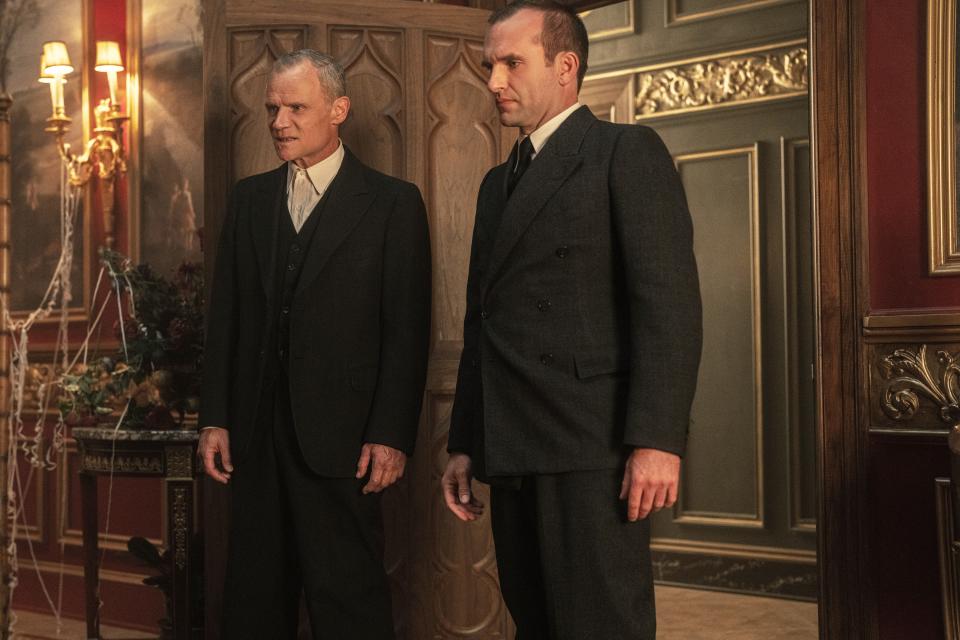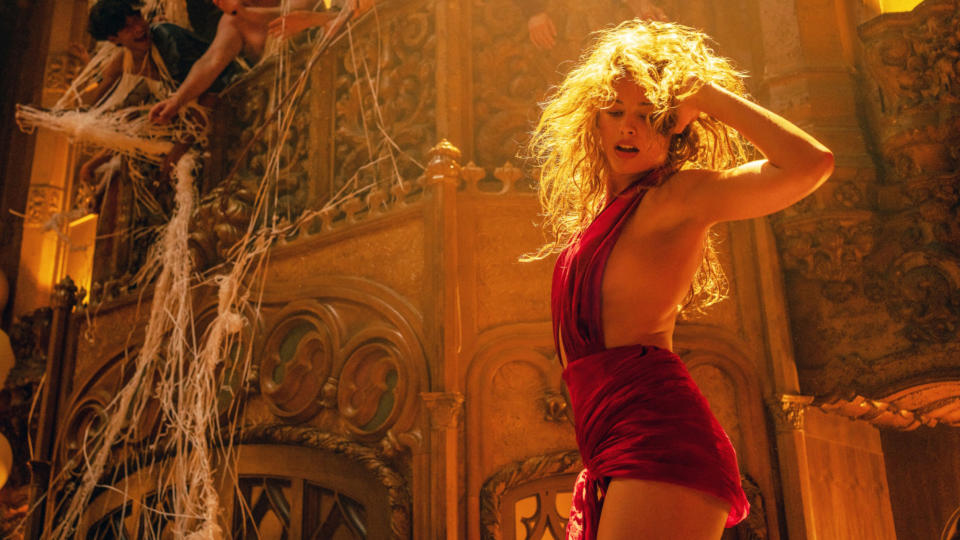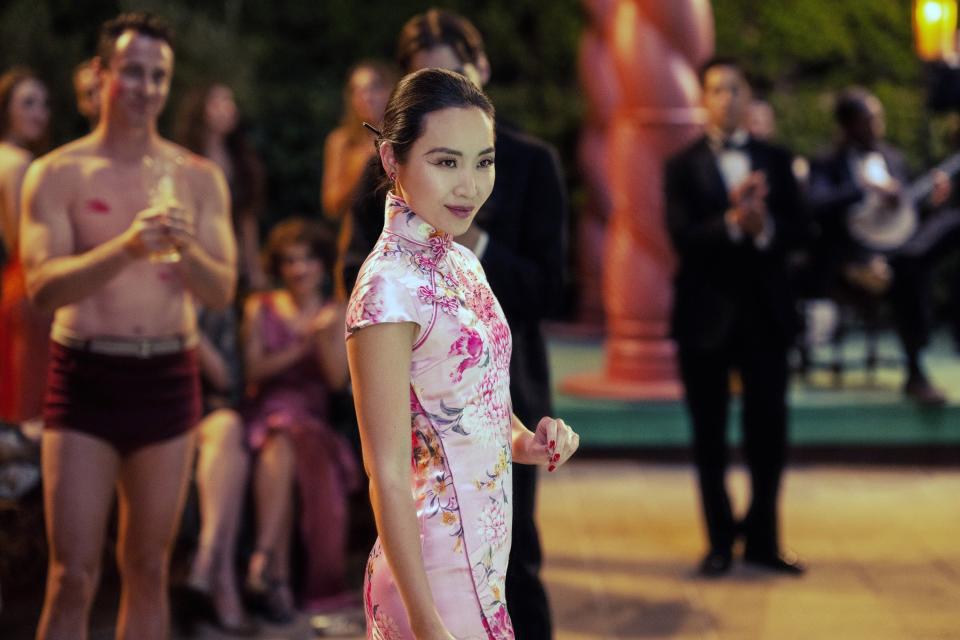Was 1920s Hollywood Really as Decadent and Debauched as It Looks in ‘Babylon’?
- Oops!Something went wrong.Please try again later.
- Oops!Something went wrong.Please try again later.

Damien Chazelle’s “Babylon” captures 1920s Hollywood in all its decadence, debauchery and excess. Filming on dusty backlots and in sumptuous mansions, Chazelle creates a fever dream of vintage filmmaking through a contemporary lens. But before looking at history through his own lens, Chazelle started out by doing months of intensive research, finding inspiration in real-life Hollywood stars, powerbrokers and events. And in many cases, the early days of moviemaking were pretty scandalous.
“The reality is that these people were operating in a no-holds-barred kind of world where an entire industry and city were being built from the ground up, and that takes a certain kind of madness,” Chazelle has said.
More from Variety
'Babylon' Director Damien Chazelle Breaks Down That 'Singin' in the Rain' Homage
Box Office: 'Avatar 2' Scores $90 Million Over Holiday Weekend, 'Babylon' Bombs at Christmas
The 1920s in particular were a freer time, says “Tinseltown” author William J. Mann. “There was an incredible freedom before the production code was established, and so people had a much freer sense of how they could live their lives. Hollywood before the code was a haven for free thinkers and free lovers.”
And all that freedom led to a lot of experimentation with sex, booze, and drugs.
“Early Hollywood scandals are really kind of about managing the discourse around why are stars self-destructing, and the studio system itself was part of the reason,” says “Twilight of the Idols” author Mark Lynn Anderson. “Contracts were intense and it was not a good kind of labor situation for stars who were making some real money.” That kind of pressure to make dozens of films a year could lead to stars relying on drugs and alcohol, and several stars died of overdoses at early ages.
Here’s how it really went down with some of the people and events depicted in “Babylon,” which stars Margot Robbie and Brad Pitt and opens on Dec. 23.
Were There Really That Many Drugs?
There was definitely a drug scene in Hollywood and drug dealing rings operating at the studios, especially in the early 1920s before William Hays came to town and started cracking down on morals both on and offscreen. While it’s highly unlikely that parties offered mountains of cocaine piled on tables for party guests to freely indulge in, as the film depicts, drugs including cocaine, morphine, heroin, opium and ether — an early anesthetic that is referenced in the film — all were on offer.
Reporter Adela Rogers St. Johns, who served as inspiration for the film’s Elinor St. John gossip columnist character, remembered “Cecil B. DeMille handing out a psychedelic combination of hyoscine and morphine at parties,” Mann’s “Tinseltown” reports.
Just like today, drug addiction often started with painkillers given for an injury, as was the case with hunky actor Wallace Reid, who died in 1923 at a sanitarium where he was being treated for morphine addiction after a train accident. The Nov. 17, 1920, issue of Variety reports on a drug bust, most likely of Reid’s dealer, in a blind item. “Thomas H. Tyner, alias Claude Walton, alias Bonnie Walton, was taken into custody here on a local lot with seven bundles of heroin on his person, according to the arresting officer. Tyner declared he was delivering the dope to one of the best known male picture stars on the coast and that it had been the second time he was engaged to deliver to the same star, whose wife in the hope of having him break the habit, informed the authorities.”
Also in 1920, a huge scandal erupted when popular Selznick Picture Company flapper Olive Thomas was found dead in Paris, with Variety reporting she had ingested bichloride of mercury. The New York Times said that police were seeking evidence on “rumors of drug and champagne orgies” and that “a former American officer, sentenced for selling cocaine, was one of those questioned.”
Since cocaine was not widely banned in the U.S. until 1922, while Prohibition got underway in 1920, it’s not surprising that addictive substances were flowing fairly freely down Sunset Boulevard.

The Roscoe “Fatty” Arbuckle Scandal
Though he’s only onscreen for a minute or two, the character of Orville Pickwick, a wealthy, corpulent man who laughs while a young woman urinates over his body during the film’s first wild party sequence, seems to have been loosely inspired by Roscoe “Fatty” Arbuckle. Later on during the party scene, Pickwick finds the woman passed out, presumably due to some kind of overdose, and screams “wake up, wake up!”
Successful comic actor Arbuckle was implicated in the 1921 death of actress Virginia Rappe. Though Arbuckle was acquitted of raping and accidentally killing her, the suspicion that she was fatally injured after he penetrated her with a champagne bottle refuses to die. “Babylon” references the urban legend with a later scene of a bottle being used on a woman.
But though it was never proved that Rappe’s death in a San Francisco hotel room was directly caused by Arbuckle, there was nonetheless plenty of alcohol flowing around the actor and his friend, despite booze being illegal for the entire decade. “Fatty Arbuckle was known to have one of the biggest cellars, which meant he had all of this alcohol at his disposal,” says Mann.
“Scandal hits industry,” blared a Sept. 16, 1921, Variety headline about the trial. “Arbuckle affair furnishes capital to screen’s enemies — hundreds of exhibitors cancel ‘Fatty Comedies.'” Arbuckle’s three trials — two ended in hung juries and he was acquitted the third time — brought more scandal to the movie business than the studios could handle.
As a result of all this bad press, in 1922, former Republican party chairman Hays was brought in as first chairman of what would become the MPA, with a mission to clean up Hollywood.
“There’s a new sensibility now, people care about morals,” “Babylon” character Manny Torres, played by Diego Calva, explains in a scene set in 1929.
“By the middle part of the decade, what the studios are also learning is how to protect themselves from the press and the public. So one thing that they didn’t have in the early 1920s, the time of Fatty Arbuckle, the murder of William Desmond Taylor — it’s only by the middle part of the decade when they start getting fixers who can contain these scandals,” says Mann.
In “Babylon,” Flea plays a studio fixer who exclaims “What a goddamn mess!” when he sees the likely dead woman at the party.
“At the first sight of any kind of misbehavior, any kind of wild party that got out of control they’re there to buy off the press or buy off the cops and that becomes an intrinsic part of the studio system,” says Mann. “There were certainly wild parties — there have always been wild parties, but by the end of the decade the studios contain them.”
“It’s interesting that the introduction of the morality clause in this kind of contract is not applied to executives in the industry — it only applied to the visible talent that were corporate assets, stars,” Anderson points out.

Clara Bow – Vamp or Victim?
In “Babylon,” Robbie plays Nellie LeRoy, an aspiring actress whose character is partially inspired by Clara Bow. Like Bow, LeRoy comes from an impoverished background and ends up rocketing to fame.
Dubbed “The It Girl,” Bow became a huge star, but her career was nearly finished by the time she was just 25. Like the Robbie character, Bow enjoyed gambling and hanging out with the USC football team (which included John Wayne at the time), but her party-girl reputation was further dragged through the mud when she accused her secretary Daisy DeVoe of theft. The ensuing trial ramped up the baseless reports of her being a promiscuous druggie.
Under the headline “Clara Getting a Tough Break, Says Par.,” Variety reported in 1931 that “Miss Bow’s latest troubles with Daisy DeVoe, her ex-secretary, has the daily papers again shooting the harpoon into her ‘because she’s good copy.'”
The article continues, “Hysterical and upset over the trial, bad publicity given her, and last week’s strenuous rehearsing for ‘City Streets,’ plus a recent operation removing a piece of cartilage from her jaw, Miss Bow voluntarily asked Par. for a six week vacation.” Though Bow was able to make the transition to talkies better than some actors, the starmaking machinery chewed her up and spit her out in just a few years.
“By the end of the ’20s we see morals clauses being written into contracts and if you did anything to offend the image of the studio you could be terminated — it was very vaguely worded as to the transgressions could be and certainly Clara Bow was the poster girl for that, even though she really did nothing wrong,” Mann explains.

Anna May Wong – Pioneering Actress
Li Jun Li plays Lady Fay Zhu in “Babylon,” dressed in a top hat and tails like Marlene Dietrich. Her character is inspired by Anna May Wong, the pioneering Chinese American actress who starred with Dietrich in “Shanghai Express.”
Robbie’s character says of Li, “Do you think she swings both ways?” Dietrich claimed to have had a romance with Wong, and speculation over her relationships with other women including Leni Riefenstahl did some damage to her reputation, but as with many things that happened nearly 100 years ago, it’s not verifiable that Wong was bisexual.
Li says in the film she’s going to Europe for better roles, as Wong did when racism made it difficult for her to succeed in Hollywood. Later on, after she lost out on the starring role in “The Good Earth” to a white actress, Daily Variety reported in 1937 that Wong planned “to make her permanent home in China and to work there in native pictures.” Wong made a short film based on her experiences during her year in China.
Was There Really a Party Tunnel With Orgies, Rats and Alligators?
Absolutely not. But there were bootleg booze tunnels running to speakeasies in downtown L.A. — which could have served as the setting for an illicit encounter or two.
“Babylon” captures the massive changes in the business with an admittedly exaggerated view, but there’s no question it was an exciting time.
“Many people look back at the silent era and they think of it as this foreign place and this strange planet that we can’t possibly relate to today, and yet it’s important to see the silent era as a continuum into the 1930s and ’40s. The production, distribution, the marketing, the the publicity offices, the self censorship, the fixers — all of that that entirety of the studio system began in the 1920s,” Mann concludes.
Best of Variety
Sign up for Variety’s Newsletter. For the latest news, follow us on Facebook, Twitter, and Instagram.

